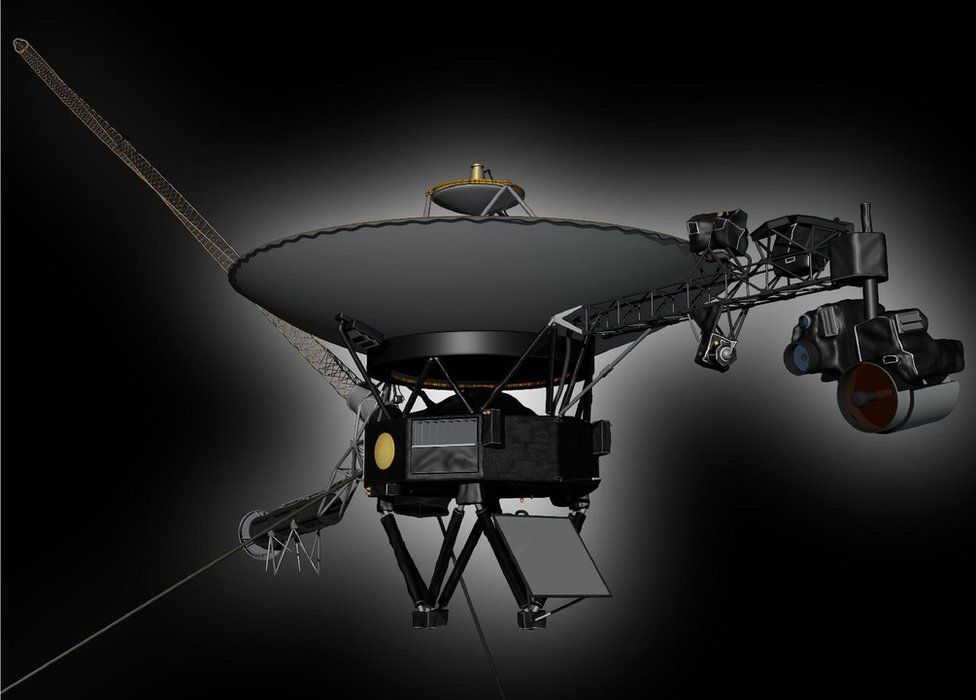ARTICLE AD BOX
 Image source, NASA
Image source, NASA
Artwork: The Voyager-1 probe was launched from Earth in 1977
By Jonathan Amos
Science correspondent
The US space agency says its Voyager-1 probe is once again sending usable information back to Earth after months of spouting gibberish.
The 46-year-old Nasa spacecraft is humanity's most distant object.
A computer fault stopped it returning readable data in November but engineers have now fixed this.
For the moment, Voyager is sending back only health data about its onboard systems, but further work should get the scientific instruments back online.
Voyager-1 is more than 24 billion km (15 billion miles) away, so distant, its radio messages take fully 22.5 hours to reach us.
"Voyager-1 spacecraft is returning usable data about the health and status of its onboard engineering systems," Nasa said in a statement.
"The next step is to enable the spacecraft to begin returning science data again."
Voyager-1 was launched from Earth in 1977 on a tour of the outer planets, but then just kept going.
It moved beyond the bubble of gas emitted by the Sun - a domain known as the heliosphere - in 2012, and is now embedded in interstellar space, which contains the gas, dust and magnetic fields from other stars.
A corrupted chip has been blamed for the ageing spacecraft's recent woes.
This prevented Voyager's computers from accessing a vital segment of software code used to package information for transmission to Earth.
For a period of time, engineers could get no sense whatsoever out of Voyager, even though they could tell the spacecraft was still receiving their commands and otherwise operating normally.
The issue was resolved by shifting the affected code to different locations in the memory of the probe's computers.
Voyager-1 departed Earth on 5 September 1977, a few days after its sister spacecraft, Voyager-2.
The pair's primary objective was to survey the planets Jupiter, Saturn, Uranus and Neptune - a task they completed in 1989.
They were then steered towards deep space, in the general direction of our galaxy's centre.
Their power comes from radioisotope thermoelectric generators (RTGs), which convert heat from decaying plutonium into electricity. The continual decay process means the generators produce slightly less power each year.
How much longer the Voyagers can continue is uncertain, but engineers have until now always come up with strategies to eke out a few extra years of operations.
Voyager-2 is a little behind its twin and moving slightly slower.
It's just over 20 billion km (13 billion miles) from Earth.
Even though both are travelling at over 15 km per second (9 miles/s), they would not approach another star for tens of thousands of years.

 1 year ago
64
1 year ago
64








 English (US) ·
English (US) ·